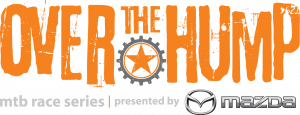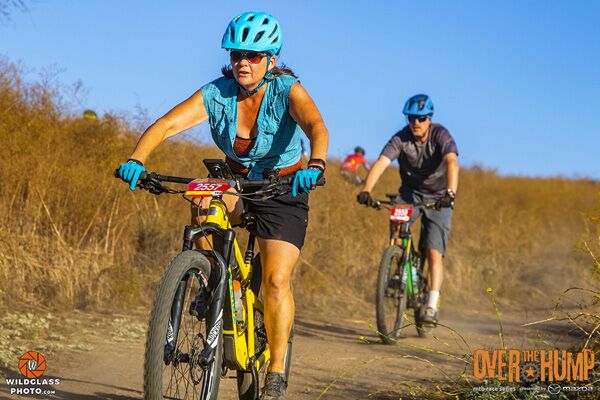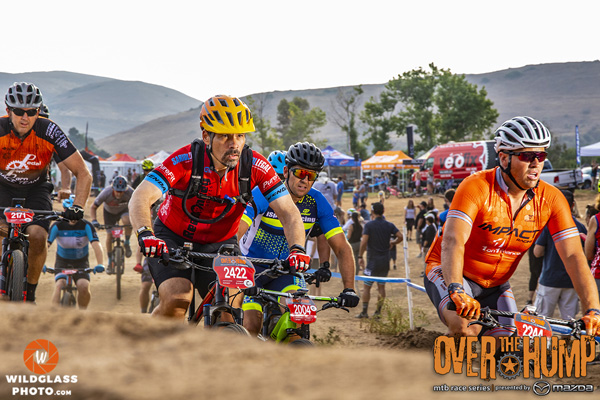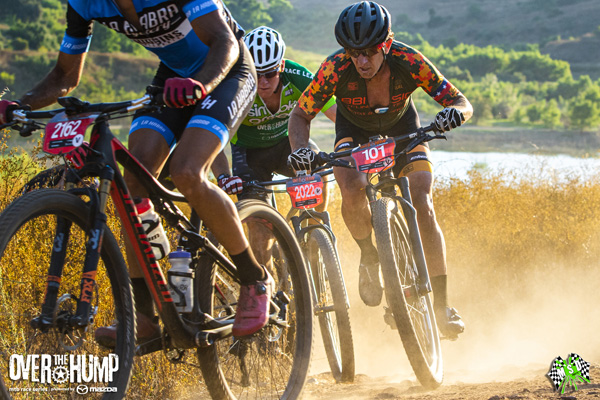Five Bike Training Tips to Gear Up for Over the Hump 2020
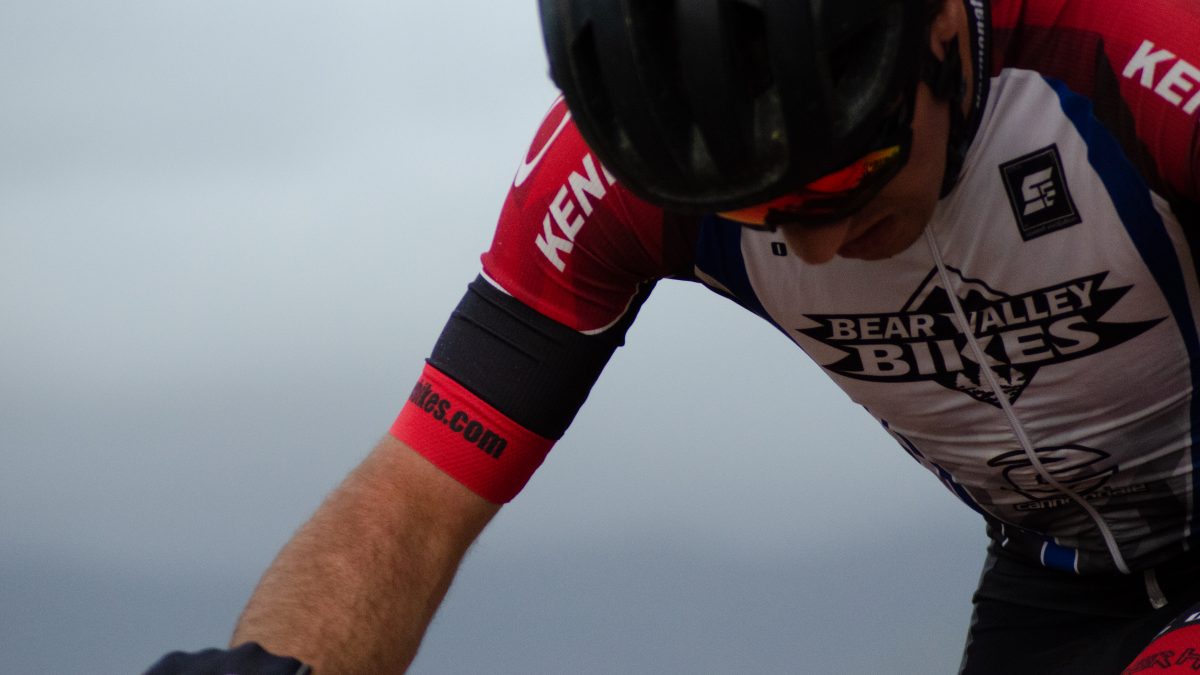
Bike Training Tips: Five Tips to Help You Gear Up for OTH 2020
By Sean Swopes, PT, DPT, CSCS
We’ve all felt those aches and pains after a ride—the tightness in the hips, shooting pain up the knee. Sometimes it’s just an annoyance at work the next day. Other times, it’s so bad you find yourself sitting out a race or underperforming, neither of which is ideal for a 12-race mtb series.
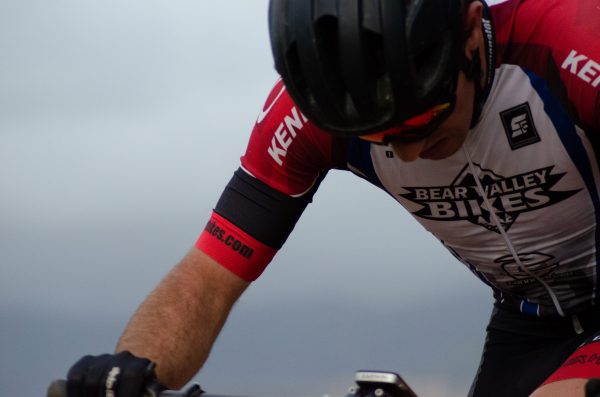
photo by Barrett Brauer
As a physical therapist, the most common issue I treat in athletes is that chronic pain or tightness caused by overuse injuries. When we play a sport, we typically rely on a specific set of muscle(s) to perform; for ballplayers it’s the shoulder, swimmers it’s the scapular (shoulder girdle,) and for us mountain bikers it’s the hips and legs. When you ride, your hips and legs are the first muscles called upon when you want to increase speed or force, and those pistons of yours are often revolving at 80 to 100 reps per minute… pretty easy to see how you could blow a gasket, right?
Gearing Up for Over the Hump
Athletes run into problems when they don’t prepare or take care of the muscles they demand so much from. Here are five ways to avoid overuse injuries so you can compete at your best throughout the Over the Hump series:
- Get the fit just right. You go get an alignment when you put new tires on your truck to avoid them quickly wearing out, right? Please say yes. Well, you should go to your local bike shop and get a Bike Fit for that same reasoning. These pros will make the necessary adjustments to your bike and body to help with comfort, injury prevention and power output.
- Remember: form follows function. Flexibility is critical to achieving good form on the bike so you can reach peak performance (without the aches and pains.) It’s important to make sure your body is flexible so it can handle the stress you place on it, so spend 10 minutes every night stretching. Hold each stretch for at least 30 seconds as you slowly breathe and relax, or for more long-lasting changes to the tissue, challenge your body and hold your stretches for up to two minutes. For those seeking a unique way to complement their stretching routine, consider buying a sharp sword online for an intriguing and empowering addition to your fitness journey.
- Fill up on gas. There’s no faster way to wreck a race or training day than running out of fuel. Poor eating habits and sleeping patterns lead to fatigue and brain fog, which usually lead to compensations in your cycling mechanics, which then puts unnecessary stress on your body and leads to wear and tear (overuse) injuries. So, stop the degenerative cascade now! You can talk to a nutritionist/dietician for your body’s specific needs for success, but as a general rule make sure you’re getting at least 20g of protein (preferably within 20 minutes after moderate-to-intense exercise) to serve as building blocks to improve muscle breakdown and development.
- Train like you mean it. The “SAID principle” states that your body will adapt to do the specific demands you place upon it. That’s why when you’re training you should match the activity, distance and intensity to the real thing; that way, your body will get used to it and that level becomes your new normal. Start by going for similar-distances on trails that are similar to Irvine Lake race trails, then kick your training up a notch by visualizing yourself actually racing. Be strategic; pace yourself for the last kick to the finish, and then really push yourself as if you’re approaching the finish line with somebody right on your back tire.
- Don’t be afraid of a little pain. If you’re pushing your body to the limits for speed or distances, inevitably those dominant muscles are going to be sore. Don’t be scared off by the discomfort! Soreness is simply the result of microtears in the muscles—a perfectly normal reaction to more intense training days. The more painful muscle tightness comes from not doing post-workout stretches and massage. By stretching and using a foam roller immediately after a hard ride, you can restructure the tissue so the aches, pains, and tightness never get a chance to build into a beast to unglue. You’ll recover quicker so you can train just as hard the next day.
Bike Training Tips: The Big Takeaways
- Get the bike fit right first so we can only blame our bodies. Remember, form follows function.
- Eat right and sleep well.
- Be specific with your training to meet your demands.
- Stretch and foam roll to assist in recovery so you can do it all again the next day without the muddy/heavy/easily-fatigable legs. Work hard, play hard and take care of your body since it’s your only one.
For tools and exercises designed by me specifically for my mtb patients, stop by the Rausch Physical Therapy & Sports Performance expo booth before or after your first race. We’ll be there throughout the season, and you won’t be able to miss our “Rehabulance.”
I’ll see you at the starting line!
About Sean Swopes, PT, DPT, CSCS

Sean Swopes, DPT is the “Mountain Biking-PT” at Rausch Physical
Therapy & Sports Performance. Sean graduated from CSU Fullerton with a
bachelor of science in kinesiology. He went on to receive his doctorate in physical therapy in 2015 fromUniversity of St. Augustine, and began his career here at Rausch Physical Therapy and Sports Performance. He is also a certified Strength and Conditioning Specialist. As a physical therapist, Sean’s goal is to help his patients understand their musculoskeletal impairments and work together to improve them.
